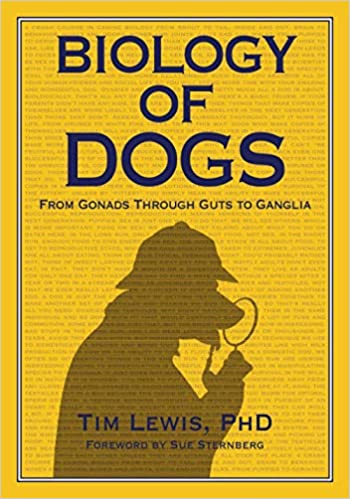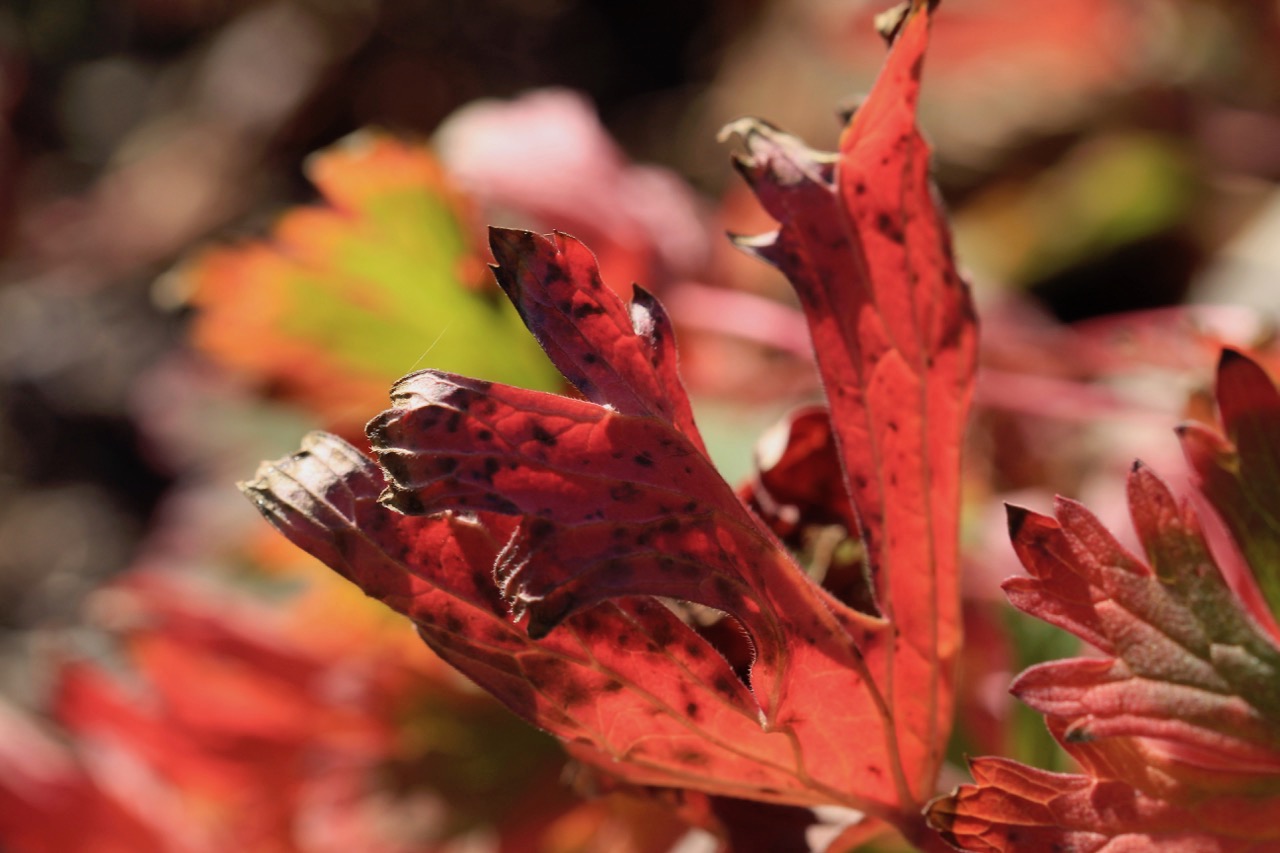I’ve been looking forward to receiving my copy of Tim Lewis’s new book, The Biology of Dogs: From Gonads Through Guts to Ganglia for a few weeks now, given all the buzz it has generated. And wow. I have not been disappointed.
Lewis is a professor of biology at the University of St. Thomas (MN), lives with two sheep-herding Border Collies and “hovers on the edges of the dog agility and canine freestyle worlds with his wife who competes in and teaches these sports.” So he’s got the chops: Solid science and two feet firmly planted in dog poop and hairy couches.
He’s also a wonderful writer. Here’s from the Introduction: ( Somewhere in the book he asks us if we’ve read it and pleads with us to do so: “It’s the best part.”.)
“While I would never say this in public nor personally admit to it [which, of course, he has both just done–see why I love this guy?], I am told I am a geek. Worse, an academic geek. Even worse than that, I am a scientist geek. But wait, it gets even worse, so you probably won’t be inviting me to your parties: I am a biologist.”
Full disclosure here: First, does something sound familiar? An author with a background in the biological sciences who lives with and is gobsmacked in love with dogs? So take my words with a grain of salt. Second, I haven’t begun to have time to read the entire book, which I like to do before writing reviews. But I wanted to get this out there soon, because it deserves a big audience. No doubt I’ll be writing posts based on topics inspired by chapters in the book, chapters like “A Float Down the Digestive System,” “A Side Quest to Look at Diet and Feeding Your Dog,” and “Home Base: The Brain.”
Here’s a set of facts from the book that people like me love knowing:
“Cells are tiny, right? It takes 10 trillion to build one 30-pound (14 kg) dog. Picturing 10 trillion is difficult. OK, it is darn near impossible without making analogies. It is more than the current estimate of galaxies in the universe, but that is not going to help. If each of your dog’s cells were as large as an average grain of sand, they would fill a box 35 feet (10.6 m) on each side. That is a three-story house with 1200 ft squared (111 m squared) on its first floor, a midsized but tall home.”
And here’s his perspective that fits so closely with mine. It might not be yours, but I love that he is so clear about it:
“Recently I heard one of the current great dog authors, an animal behaviorist, at a national professional dog trainer’s conference, say that it really does not matter what goes on inside a dog’s head, that neuroscience offers nothing to work with for understanding dog behavior. His point was that you don’t need to know how a car runs to drive it. I am making the argument in this book that, if you do know how the car runs, you will appreciate the car (I really mean the dog here) a lot more. You won’t feel as stupid when you hear a grinding sound that you can’t identify, and you will give the mechanic a lot more to work with, which will save you time and money.”
As the person whose earliest memory is lying on the living room carpet with my dog Fudge, staring into her eyes and wondering what was going on in her brain, I say “Here Here.” You can champion Operant Conditioning, as I do, and focus on the ABC’s of it while being fascinated and informed by understanding what’s going on inside your dog body and brain. As one reviewer of Biology of Dogs said: “Turns out the inside of a dog is not too dark to read…”. Kudos to Dogwise for publishing the book, and to Dr. Lewis for taking us on what will no doubt be a magical mystery tour of canine wonderfulness.
MEANWHILE, back on the farm: Ridiculously warm weather for early November, and gloriously sunny besides. We all know the other shoe is going to drop, but what a wonderful breath of summer before winter starts in earnest.
I’m still playing with my new macro lens, please be patient with me. I have no idea why I am so into paws lately, but, well, there it is.
I have some asters that are still in full bloom, the only flowers left on the farm. Saturday it was so busy with insects that the buzzing noise was approaching OSHA limits.
This photo of Nellie is far from perfect, the focus isn’t quite right, but I love it’s celebration of whiskers. And Nellie loves it when I go out with my camera. It’s actually hard to get far enough away from her to take her picture now.
Some of the best color still on the farm is in the geranium leaves. I am learning how color crazed I am–the lack of it is the hardest part of winter for me. It’s not the cold, it’s the month after month of black/brown and grey. But it’s not gone yet!
Here’s hoping there is beautiful color in your life this week. And good books? Let us know what you are reading, and if you’ve read Tim Lewis’s book yet. I’m going to savor it all week.
Poop4U Blog
via www.Poop4U.com
Trisha, Khareem Sudlow







No comments: